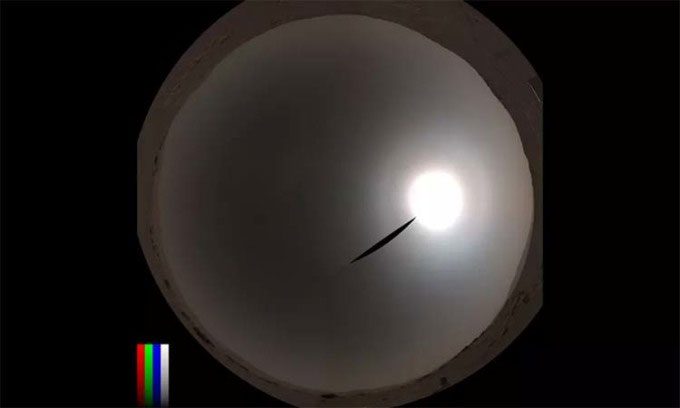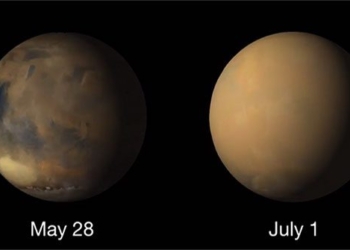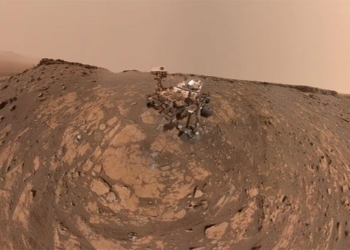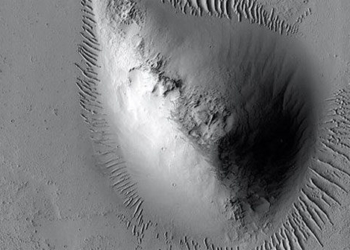The Perseverance rover has encountered a solar halo, a phenomenon that scientists have long awaited but have not observed in decades of Mars exploration.
On Earth, under suitable conditions, ice crystals in the atmosphere can bend sunlight to create bright spots on either side of the sun or a halo surrounding it. Scientists believe that a similar optical phenomenon could occur on other planets. However, after decades of countless images sent back from Mars rovers, they had yet to see any signs of a solar halo.

Solar halo captured by the Perseverance rover on Mars on December 15, 2021. (Image: NASA/JPL-Caltech/Mark Lemmon)
This changed on December 15, 2021. “Perseverance truly surprised us with the images taken in December,” said Mark Lemmon, a planetary scientist at the Space Science Institute, in an interview with Space on September 15. This new research was published in the journal Geophysical Research Letters.
On Earth, certain conditions are necessary for a halo to appear around the sun. Sunlight must interact with ice crystals moving in the atmosphere, typically in the form of cirrus clouds high above. The hexagonal structure of water ice crystals determines the size of the halo, which appears at an angle of 22 degrees relative to the sun.
If the crystals are too small, the clouds too thick, or the temperature too warm, the halo will not appear. Crystals of other substances in the atmosphere can produce a similar effect, but the crystalline structure of each substance will create a halo of different sizes.
Carbon dioxide (CO2) is much more abundant in the Martian atmosphere than water, so the research team calculated the size of the halo created by CO2 ice crystals. However, these calculations did not match what Perseverance observed.
The research team investigated whether the halo could have been caused by the camera itself and ruled out this possibility. They also confirmed that it was definitely not dust. Furthermore, the solar halo image is part of a series of five images that Perseverance took of the Martian sky. In these images, the sun and the similar halo appeared three times, each time in a different position within the frame.
The presence of the halo around the sun helps scientists gain further insight into the Martian atmosphere, particularly regarding how ice crystals can grow larger than they have previously measured directly. Lemmon eagerly anticipates the next time Mars enters a season similar to the one during which Perseverance captured the solar halo for further study.





















































